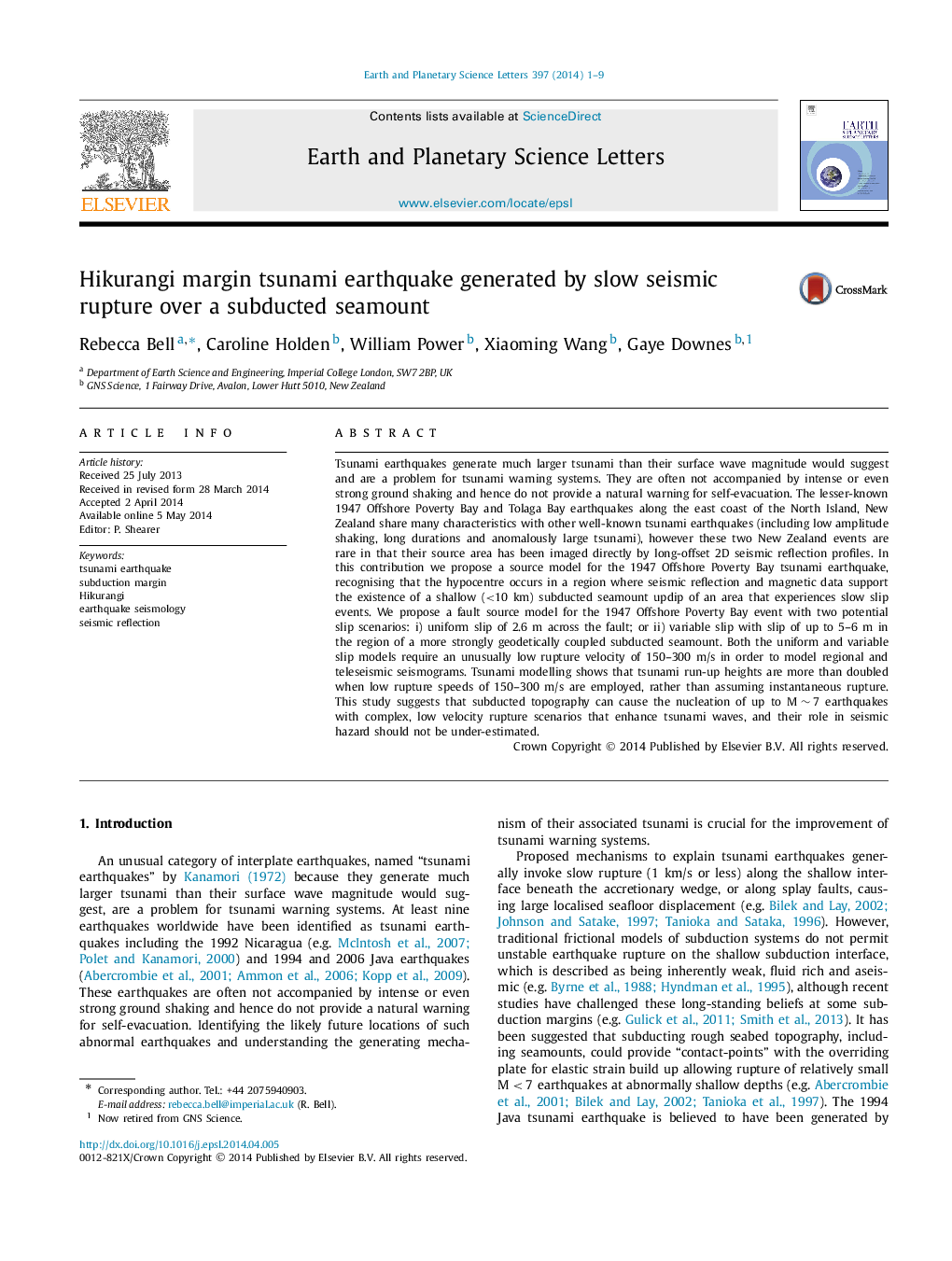| کد مقاله | کد نشریه | سال انتشار | مقاله انگلیسی | نسخه تمام متن |
|---|---|---|---|---|
| 6429360 | 1634759 | 2014 | 9 صفحه PDF | دانلود رایگان |

- Two little-known tsunami earthquakes occurred in New Zealand in 1947.
- The earthquakes occur in regions where seismic and magnetic data image subducted seamounts.
- Regional and teleseismic seismograms can be modelled by low rupture velocities (300 m/s).
- Such low rupture velocities lead to an amplification of tsunami waves.
- The role of subducted topography in estimating seismic hazard should not be under-estimated.
Tsunami earthquakes generate much larger tsunami than their surface wave magnitude would suggest and are a problem for tsunami warning systems. They are often not accompanied by intense or even strong ground shaking and hence do not provide a natural warning for self-evacuation. The lesser-known 1947 Offshore Poverty Bay and Tolaga Bay earthquakes along the east coast of the North Island, New Zealand share many characteristics with other well-known tsunami earthquakes (including low amplitude shaking, long durations and anomalously large tsunami), however these two New Zealand events are rare in that their source area has been imaged directly by long-offset 2D seismic reflection profiles. In this contribution we propose a source model for the 1947 Offshore Poverty Bay tsunami earthquake, recognising that the hypocentre occurs in a region where seismic reflection and magnetic data support the existence of a shallow (<10 km) subducted seamount updip of an area that experiences slow slip events. We propose a fault source model for the 1947 Offshore Poverty Bay event with two potential slip scenarios: i) uniform slip of 2.6 m across the fault; or ii) variable slip with slip of up to 5-6 m in the region of a more strongly geodetically coupled subducted seamount. Both the uniform and variable slip models require an unusually low rupture velocity of 150-300 m/s in order to model regional and teleseismic seismograms. Tsunami modelling shows that tsunami run-up heights are more than doubled when low rupture speeds of 150-300 m/s are employed, rather than assuming instantaneous rupture. This study suggests that subducted topography can cause the nucleation of up to Mâ¼7 earthquakes with complex, low velocity rupture scenarios that enhance tsunami waves, and their role in seismic hazard should not be under-estimated.
Journal: Earth and Planetary Science Letters - Volume 397, 1 July 2014, Pages 1-9